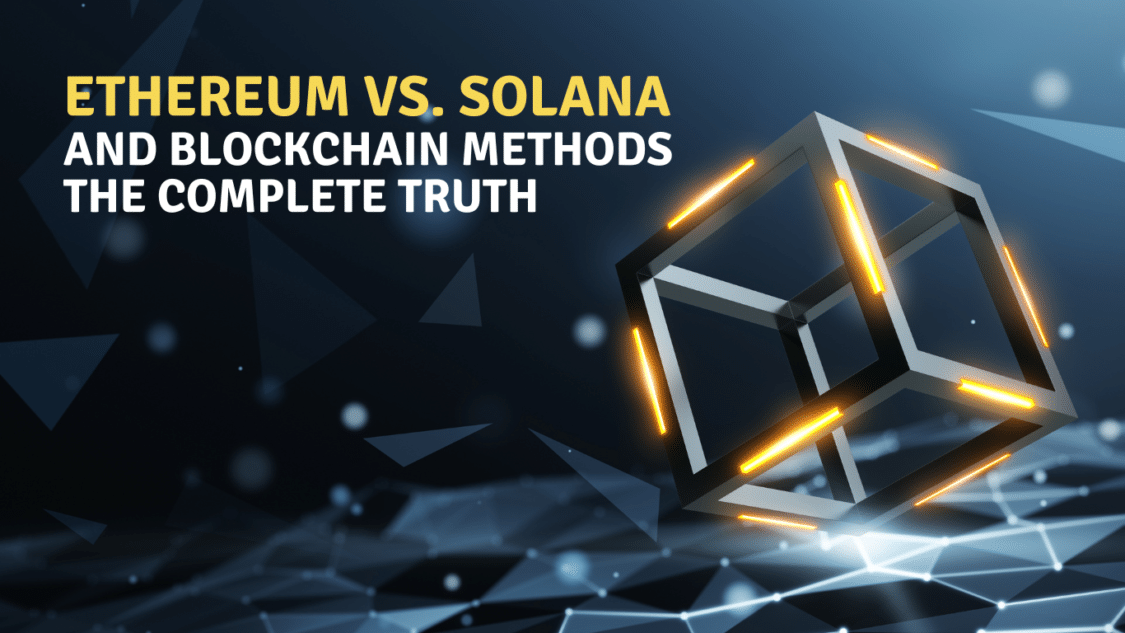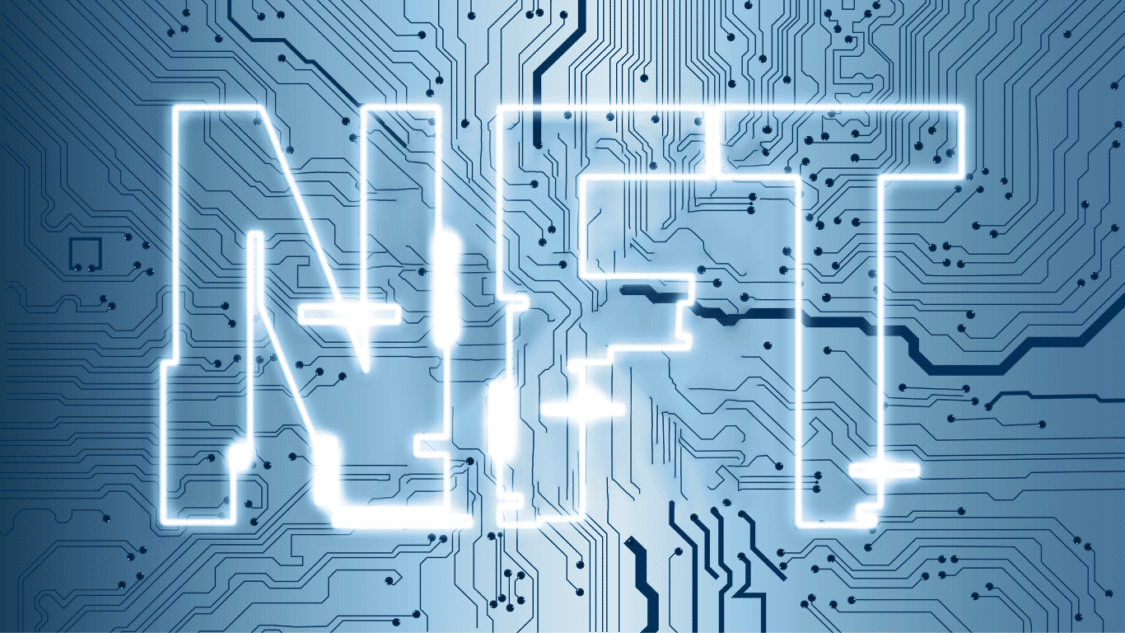Searching for a good and efficient blockchain network, whether Ethereum vs. Solana or others, can often be challenging. Each blockchain out there has its pros and cons. Whether it be the number of transactions they can complete or the low cost. Solana vs. Ethereum is the two most popular blockchain networks that investors often debate between. What are their differences and similarities?
Ethereum Vs. Solana – Interdiction:

What is Solana?
Solana is a high-performance blockchain system. It is to enable the scalability of user-friendly applications. In addition, it is a fast-growing ecosystem with projects from Defi to NFTs, Web3, and more.
The Solana blockchain technology is known to complete transactions speedily with minimal transaction fees.
Transaction fees cost under $0.01 in 400 milliseconds per block. This is not to say that Solana is the best or the fastest blockchain because it also had a rough patch. In September 2021, the network crashed close to three times due to a hack in the system. It was causing 17 hours of the entire network to shut down. A recent crash resulted in a Solana bridge to the Ethereum network hack, which cost the blockchain $320 million of stolen assets.
Proof of History (poh)
The Solana network uses the PoH consensus. The Solana network uses PoH to provide a historical record demonstrating an event at a particular time. PoH utilizes a cryptographically secure function written so the outcome cannot be taken from the input. It must be done in the right way to get the correct output.
Transaction Speeds
A centralized network achieves the transaction speeds on the Solana network. This brings with it certain risks that we discussed above. In addition, Solana uses a Tower Byzantine fault-tolerant, also known as (BFT). Using BFT makes no need for nodes that communicate with one another. This brings with it improved efficiency, which is a great plus. As of right now, Solana can process 50,000 transactions a second.
Improved Scalability
The Solana network is entirely scalable; this means it does not require layer-two solutions to increase scalability. The Solana network has a method of technology behind it that makes the blockchain what it is. The technology breaks down its data into smaller sections to make it easily transferable.
What is Ethereum?
Ethereum is a community-built technology that stands behind the original crypto ETH and many applications we use daily. The unique thing about Ethereum is that you can access digital money from their network no matter where you are. Although Ethereum lacks speed and reasonable transaction fees, it makes up for it with decentralization. Layer-two solutions help provide enhanced scalability and throughput to compensate for the loss of scaling features at the core of its blockchain.

Ethereum Blockchain
Ethereum uses a Proof of Work (pow) mechanism. PoW allows the decentralized Ethereum network to agree that one party will prove to another that a computation effort is being expanded. How does this help the network? This prevents users from spending ETH that they do not have and makes the Ethereum chain nearly impossible for hackers to attack.
Smart Contracts
Smart contracts on the Ethereum blockchain are widespread. It can support a range of programmability, which helps develop various types of smart contracts. Solidity is Ethereum’s base programming language, and it is used to code these smart contracts.
Scaling
Due to Ethereum’s lack of scalability, the network can only handle up to 15 transactions per second. To aid in the absence of scalability, they have added layer two scaling solutions such as Polygon or Validium. Furthermore, once Ethereum upgrades, the Ethereum creator said that transaction speeds could reach 100,000 transactions per second (tps) with the same level of security.
NFTs
The Ethereum blockchain has been one of the most successful for NFTs. Even though many blockchains include NFTS, Ethereum is the go-to.

Is Ethereum more secure than Solana?
When comparing the security of Ethereum vs. Solana, it is essential to consider several factors.
One of the largest and most popular blockchains, Ethereum, has a solid reputation for security. However, the Proof of History (PoH) and Proof of Stake (PoS) consensus mechanisms used by Solana are distinctive. The new approach ensures security while delivering quick transaction processing and scalability.
While both blockchain networks strongly emphasise security, there’s no definite more secure option. Blockchain network security is a continuous effort considering several factors, including the underlying technology, network consensus, developer community, and ecosystem robustness. Solana and Ethereum each have their advantages and disadvantages.
Remembering Ethereum vs Solana price predictions are speculative and dependent on various market conditions is essential. They shouldn’t be the only consideration while making security or investment decisions. To make educated decisions based on their unique requirements and risk tolerance, investors and developers must carefully evaluate the security features, community support, ecosystem maturity, and technological characteristics of Ethereum vs Solana.
What are some notable projects and decentralized applications (DApps) built on Solana and Ethereum?
Projects and DApps on Solana:
Serum: A decentralised exchange (DEX) powered by Solana that provides quick and affordable trading.
Mango markets: a defi platform on Solana allowing users to trade and lend digital assets.
Adius: A decentralised music streaming network that enables artists to distribute and monetise their songs directly on Solana.
Raydium: A platform for yield farming and liquidity provision on Solana that allows users to profit from their liquidity providers.
The Solana Name Service (SNS): a decentralised domain name system (DNS) that lets anyone register and administer domain names.
Projects and DApps on Ethereum:
Uniswap: a decentralised exchange (DEX) for Ethereum that enables liquidity provision and automatic token exchanges.
Aave: a decentralised Ethereum network that enables users to lend and borrow different cryptocurrencies.
MakerDAO: An Ethereum-based decentralised autonomous organisation (DAO) in charge of running the stablecoin Dai and preserving its peg to US dollar
Chainlink: a decentralised Ethereum oracle network that safely and consistently feeds real-world data to smart contracts.
Cryptokitties: One of the first and most well-known Ethereum-based blockchain games, allowing players to gather, breed, and exchange virtual cats.
What are the current and future developments or upgrades planned for Solana and Ethereum blockchains?
Solana is actively working on several exciting upgrades to enhance its blockchain. The first one is Wormhole, like a bridge connecting Solana with other blockchains such as Ethereum. This will enable assets to move quickly between different networks, opening up more opportunities for users and developers. The performance and stability of the network will also be significantly enhanced by Solana 1.5, which is now under development. Better tools and quicker transaction processing will enable developers to create exceptional Solana apps. Another program that encourages programmers to build original products on the Solana blockchain and promotes development and innovation across ecosystems is the Solana Season Hackathon.
Regarding Ethereum, there are several significant advancements in the works. The substantial improvement known as Ethereum 2.0, or Eth2, seeks to make Ethereum more scalable, secure, and energy-efficient. It entails switching to a more sophisticated proof-of-stake consensus method from the present proof-of-work consensus mechanism.
With this update, Ethereum can process more transactions while using less energy. EIP-1559, which suggests a new charge structure to make transaction pricing more foreseeable and user-friendly, is another significant advancement. The Layer-2 scaling techniques Optimistic Rollups and zkRollups, which will expand the network’s capacity and reduce transaction costs, are also being actively investigated by Ethereum. To ensure the network’s growth, the Ethereum community often submits and debates Ethereum Improvement Proposals (EIPs) that would add new features and standards.
Can Solana overtake Ethereum?
The potential for Solana to overtake Ethereum is a hot topic in the cryptocurrency community. Due to its quick transaction times, scalability, and cheaper transaction costs than Ethereum, Solana has attracted much interest and appeal. These benefits have encouraged users and developers to investigate the Solana ecosystem for decentralized apps (dApps) and initiatives. With a well-established network, a sizable development community, and widespread acceptance, Ethereum still holds a leading position in the blockchain industry.
Although Solana’s technology and performance seem promising, it competes with Ethereum’s network effect, long-standing alliances, and widespread use. The crypto and blockchain industries are renowned for their continued innovation and quick evolution. Rapid landscape change and the emergence of new technologies threaten the status quo. It remains to be seen if Solana can challenge Ethereum for market supremacy. Still, its rising popularity and ongoing development might make it an intimidating competitor to Ethereum in the future.
Conclusion
Ethereum vs. Solana is two strong blockchain systems with different characteristics and capacities, as the comparison reveals. One of the first blockchains, Ethereum, has proven itself as a strong and adaptable ecosystem that can support a variety of decentralized apps and smart contracts. It is an excellent choice for many enterprises and investors due to its sizable development community, vast network impact, and established track record.
On the other hand, Solana stands out as a strong candidate thanks to its outstanding scalability and affordable transaction costs. High-speed processing and effective throughput are made possible by its distinctive design and cutting-edge consensus mechanism, which helps it overcome some of the scalability issues that Ethereum faces. Strategic alliances and Solana’s expanding ecosystem point to the platform’s potential for further growth and acceptance in the industry.
Developers and businesses looking for a developed and well-supported blockchain may find Ethereum an appealing alternative because of its existing market presence and extensive tools. Solana could be more suited for applications that require high-speed transactions and scalability because of its performance-oriented architecture.
Ultimately, they both contribute to the evolving landscape of blockchain technology. As the market expands and changes, it is crucial to be aware of the distinct advantages and disadvantages of each one. Whether it’s Solana or Ethereum, the future of blockchain technology is bright, with lots of room for expansion, inventiveness, and game-changing uses.
For more news updates, visit our homepage now and see our latest news article. Want to learn more about trading? Visit our education page now and learn for FREE!
Solana versus Ethereum(Opens in a new browser tab)

